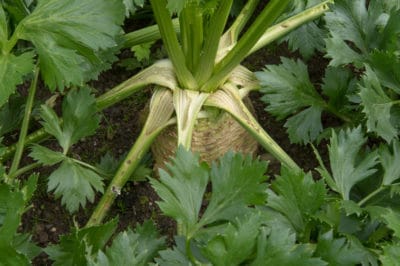Celeriac Soil Preparation
Celeriac was originally a swamp or “muck” plant. It likes a fertile soil, which should be enriched with organic humus from well-rotted manure or leaf mold. You can (and should) work a balanced 5-10-10 organic fertilizer into the soil. Soil should be moisture-retentive but also drain well to prevent the possibility of fungal diseases or rot. Site the growing plot in full sun for best growth.
Celeriac Varieties
Several varieties of celeriac are available. They include:
- Diamant – (100 days) a hybrid; stores well and rarely suffers from hollow core.
- Large Smooth Prague – (110-112 days) also called Giant Prague; heritage variety but still a standard cultivar.
- Brilliant – (110 days) open-pollinated with nearly fiberless roots; resists hollow heart.
- Monstorpolgi – (100 days) early maturing, few side shoots.
When to Plant Celeriac
Like celery, celeriac prefers the cool conditions of spring. With its long growing season, seeds should be started indoors at least 10 weeks prior to the expected date of the last spring frost. However, in warm weather climates, gardeners may raise better quality celeriac by planting in late summer and allowing the plant to grow in fall and winter over.
Growing Celeriac
Although celeriac is generally easier to grow than celery, it has similar needs. Never let it go short on water. A soaker hose or drip irrigation are ideal, as the soil should not dry out. Place a few tablespoons of organic 5-10-10 fertilizer in shallow trench three inches from the roots at least twice. You can also apply compost or manure tea every two to three weeks.
When to Harvest Celeriac
As the celeriac root develops, it will begin to push above the ground. It can be harvested any time after the root is three to four inches in diameter. The flavor will be improved if not harvested until the plant has sustained a few frosts. Hard freezes can damage the plant, however, so mulch heavily in colder climates if harvest is delayed.
Storing Celeriac
In many climates, celeriac can be stored in the garden and dug as needed until growth starts again in spring. Mulch heavily if you live in an area where the ground freezes. It can be stored in the refrigerator for about a week. Celeriac also stores well in a cold moist root cellar for one or two months. Place in boxes of damp sand or peat moss.
